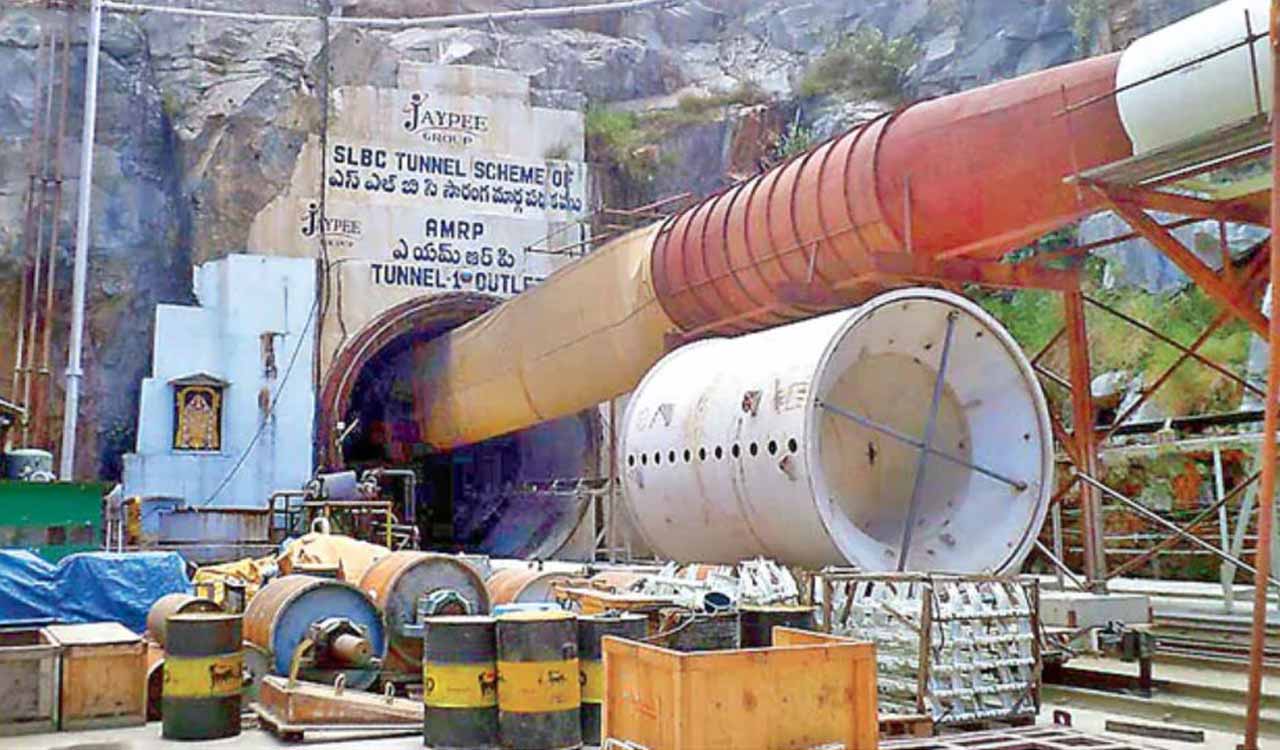All set to shift to drill and blast method, SLBC tunnel project to face serious environmental issues

The State government is preparing to obtain forest clearance from the Union Ministry of Environment, Forest and Climate Change (MoEFCC), as required under the Forest (Conservation) Act, 1980. Efforts are underway to submit a comprehensive proposal through the State Forest Department to facilitate the process.
Published Date – 2 May 2025, 02:50 PM

Hyderabad: Firm on completing the Srisailam Left Bank Canal (SLBC) tunnel project, Telangana government is set to shift from the previously used Tunnel Boring method to the drill-and-blast method (DBM). This transition, however, requires overcoming serious environmental issues as the tunnel passes 400 meters beneath the Amrabad Tiger Reserve, a protected forest area.
The state government is planning to secure forest clearance from the Union Ministry of Environment, Forest and Climate Change (MoEFCC), which is mandatory in compliance with the Forest (Conservation) Act, 1980. Moves are afoot for submitting a detailed proposal through the state Forest Department for this purpose.
Technical experts have already been tasked with the job of justifying the shift to drill-and-blast method that may call for surface-level interventions even if minimal disturbances are involved. It would call for an environmental impact assessment to evaluate potential effects on the tiger reserve’s ecosystem and wildlife.
The consideration of the proposal would be an issue highly sensitive in nature as the Amrabad Tiger Reserve is involved and clearance for such kind of surface interventions would be an uphill task. The wildlife clearance from the National Board for Wildlife (NBWL) also is required, as the project runs beneath a critical wildlife habitat, according to officials.
The NBWL’s Standing Committee will review the state’s wildlife mitigation plan, which must include measures to minimize disruption with measures such as controlled blasting techniques. The state is ready to take up compensatory afforestation programmes and make the net present value (NPV) payments, as required for any diversion of forest land.
Identifying suitable non-forest land for afforestation presents another major challenge, they added. With 13.93 km already excavated from the Srisailam reservoir end, a small but critical 6.01 km stretch remains on the inlet side to be completed, especially covering the point where the two tunnel sections are expected to meet.
The inlet tunnel directly connects to the Srisailam reservoir, pulling water through a head-regulator located about 4 km upstream. The tunnel collapse occurred at the 14th kilometer of this section, revealing geological challenges like shear zones, weak rock formations and water seepage.
The next steps will focus on tackling these geological hurdles to safely complete the tunnel connection. A team from the National Institute of Rock Mechanics (NIRM), a research institute specializing in rock engineering and mechanics, visited the tunnel two days ago after the rescue operations were called off. It has taken up a study of the conditions prevailing in the 43 metre stretch of the tunnel collapse site, which has been declared a ‘no go zone’ and the remaining six kilometer stretch where the excavation works are expected to be taken up soon.






